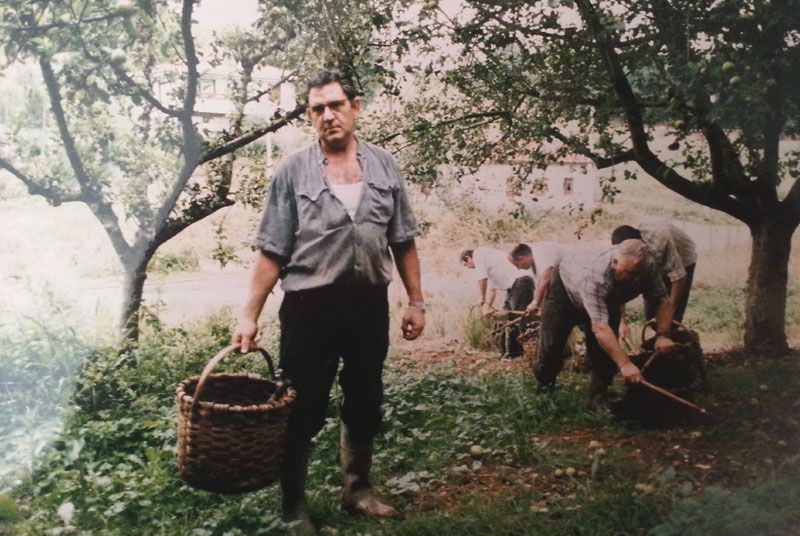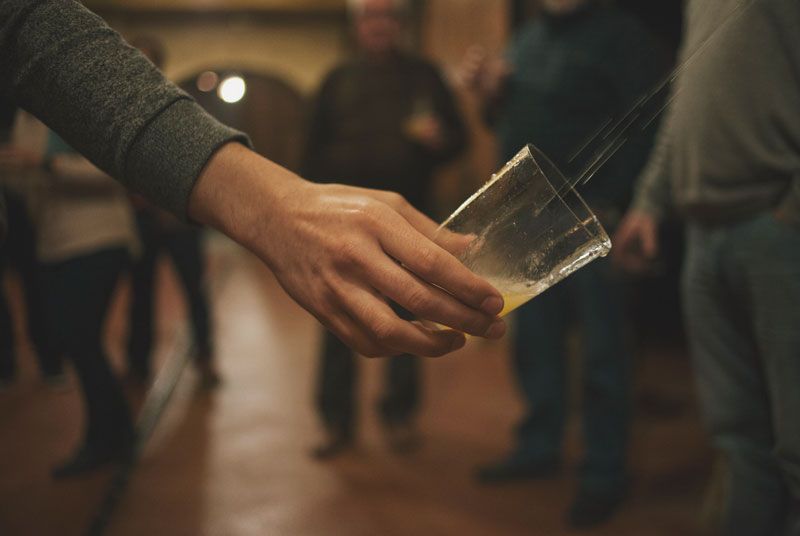
Petritegi had a traditional wooden press to make cider with the apples grown on its own properties. The cider they made was intended for family consumption, but it was also sold as supplies for the Gipuzkoan fishing fleet, to individuals and to the so-called “cider taverns” or cider houses.
Today the Petritegi cider house is the perfect place to taste Basque cider and gastronomy: out in the countryside, surrounded by apple trees and only 5 km from San Sebastian.

The Petritegi cider house cellar is a unique and special place. Here you can learn about the cider culture, ubiquitous and vitally important in Basque society ever since its origins. Enjoy drinking cider straight from the barrel txotx-style all year round: making your way with the other diners from the dining room to the cellar where cider is served from the barrel is the first part of the txotx ritual. The cider maker will decide which barrels to serve from.
The cellar is the place where the cider maker and enthusiasts gather; the former offers the fruit of his work and the latter voice their opinion and praise. Guests heading for the cellar to taste the different ciders also end up mingling spontaneously with one another
Store bottles of cider horizontally in a cool, dry place. To enjoy its qualities to the full, it is advisable to consume the cider within its recommended use-by date. Natural cider should be consumed at between 10 and 13ºC. Cider is an unfiltered product which, with time, tends to drop sediment to the bottom of the bottle.
Before serving, we recommend turning the bottle upside down and shaking it to homogenise the cider. Once open, the cider should be consumed almost immediately, replacing the cork to keep it fresh. The glass should be wide-mouthed and thin-walled to enjoy the cider to its full. When serving, the bottle should be raised slightly so that the cider splashes off the side of the glass on pouring; it should be consumed immediately.
At the Petritegi cellar you can taste the cider we produce while tucking in to a typical cider house menu. You can combine your visit with the activities we have prepared for your enjoyment, whether you come alone or with your family.
Visit Petritegi’s online shop, where you can purchase our cider in different bottle and package formats, so that you can enjoy it anytime, anywhere. You’ll also find t-shirts designed by Petritegi.
Come to our cider house and enjoy a typical cider house menu. We have composed different options to ensure that the Petritegi experience has something for everyone. Tucking into our bone-in ribeye steak is a delight for the senses. We also have a children’s menu for a perfect family outing.